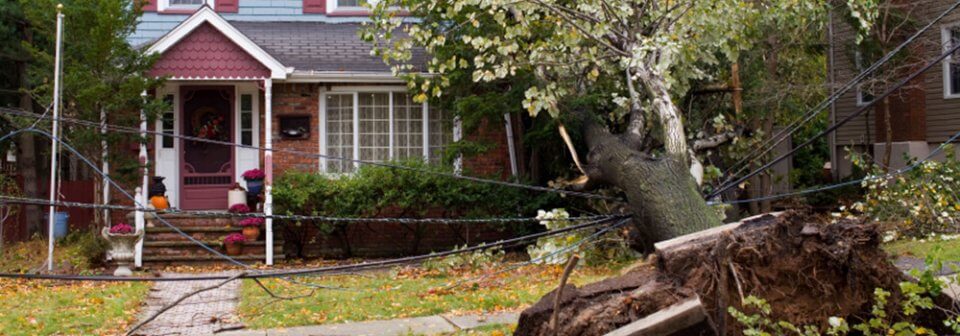
With El Niño weather conditions expected to last through the winter and into the spring of 2016, strong winds and rain have been predicted. Along with those powerful winds come toppled trees…and, if one of those trees falls onto your house and causes heavy damage, are you covered?
Luckily, in most cases, according to the Insurance Information Institute, you are. Even more reassuring is the fact that your standard homeowners insurance policy will cover your home or other insured structure, such as a detached garage, and its contents, if a tree is felled by wind, lightning or hail.
Furthermore, whether you own the tree or not is of no consequence. If it crashes on your home, damaging any part of it, you can file a claim with your insurance company. During intense windstorms, trees, shrubs and branches can easily become airborne projectiles. The end result can be considerable damage to property – from torn up roofs to broken windows or worse.
Should your neighbor’s fallen tree be responsible for damaging your home, a process known as subrogation may be used by your insurance company to collect from his insurer for the damage it caused and their payout to you. However, you will normally have to pay the preset deductible as stated in your policy before work will begin.
On the bright side, if your insurer is successful in proving the neighbor’s tree was in poor health or lacked proper maintenance, you may be eligible for a reimbursement of your deductible.
Depending on your policy, you may also be covered for the cost of removing the tree. These amounts can range from about $500 to $1000, if your insured house or garage is damaged by the tree. But, if there’s no damage to any covered structures, the cost of tree removal may be your responsibility – unless your insurance company opts to pick up the tab should the felled tree be blocking a driveway or is compromising a ramp specifically designed to assist the disabled.
In addition, standard home insurance policies protect you from damage to trees and shrubs on your property caused by any of the following:
- Fire
- Lightning
- Explosion
- Theft
- Aircraft
- Vehicles not owned by you or a family member
- Vandalism
- Malicious mischief
Typically, insurance coverage for any disasters stated in your policy is limited to only about 5 percent of the insured amount of the house or structure. Plus, the majority of insurers will set a limit of coverage to about $500 for any single tree, shrub or plant.
What about if a tree falls onto your car on your property? Simple – your auto insurance and not your homeowners insurance will cover the repairs for damage to your vehicle. But, because every insurance company takes a different approach to fallen trees, you may not be covered for the cost of removing the tree from your crushed car.
Be sure to check your policy and review it regularly so you know ahead of time what’s covered and what isn’t. That way you can make the appropriate adjustment to your policy to fill in any potential gaps in coverage.
You also want to make sure you’re not paying more than you should for your homeowners insurance by getting a free homeowners insurance quote today! Call Freeway Insurance at (800) 777-5620 today to get your free quote from a live agent.



